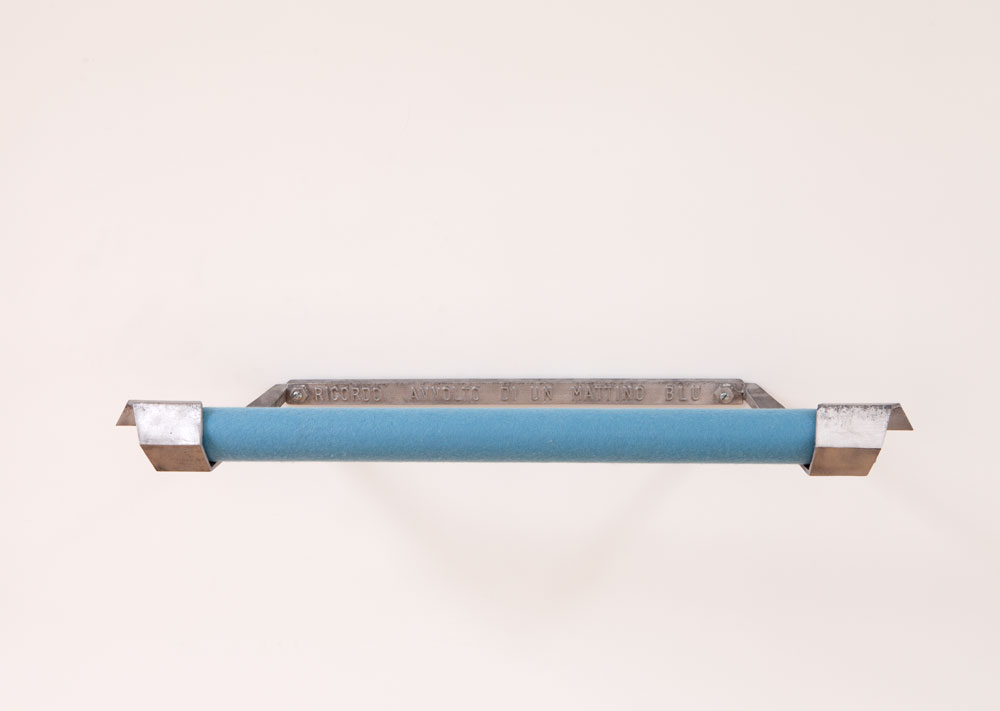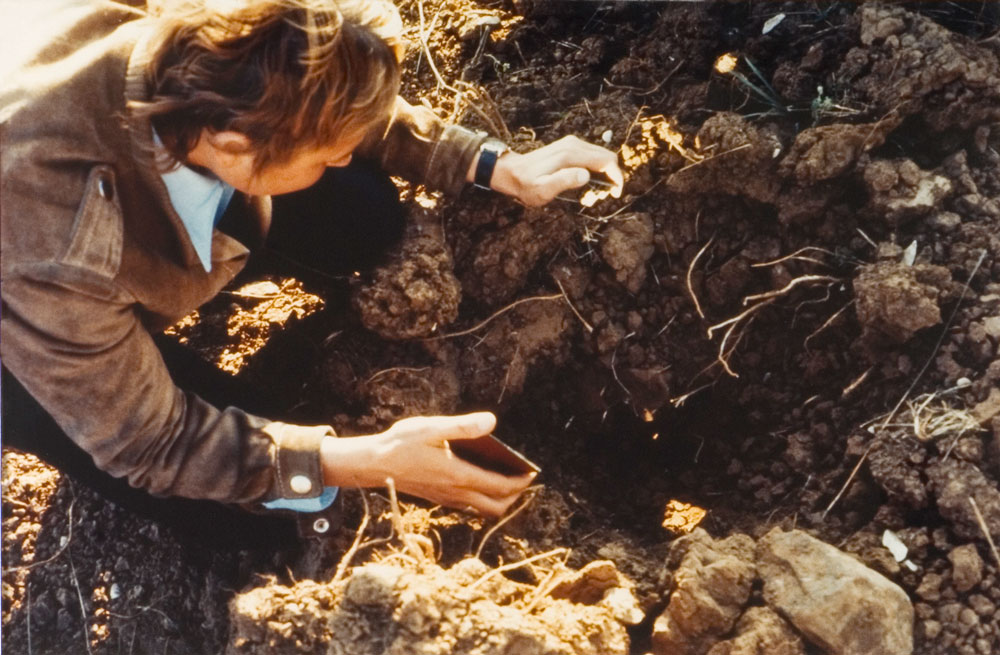ART CITIES:Paris-Gina Pane
 There are many times when everyone is wondering how easy is for an artist to make performances or works of Land Art- Environmental art within the narrow space of the Gallery, how can it function? After the size and scale is changing. Ιn my opinion, is a question that remains unanswered, always depends on two components, the venue and the selection of the works of the artist. This combination is excellent when works by the great French artist of the 1970s Gina Pane, are exhibited at the kammel mennour gallery in Paris. I have seen many different exhibitions of contemporary artists who are been using different media in this space (47, rue Saint‑André‑des‑Arts) the past 7 years, I believe it is one of the best venues. As for the selection of Gina Pane’s works, is a representative choice that introduces the viewer to the work of the artist with excellent set-up and one of the most elaborate and easy-to-use catalogs-documents.
There are many times when everyone is wondering how easy is for an artist to make performances or works of Land Art- Environmental art within the narrow space of the Gallery, how can it function? After the size and scale is changing. Ιn my opinion, is a question that remains unanswered, always depends on two components, the venue and the selection of the works of the artist. This combination is excellent when works by the great French artist of the 1970s Gina Pane, are exhibited at the kammel mennour gallery in Paris. I have seen many different exhibitions of contemporary artists who are been using different media in this space (47, rue Saint‑André‑des‑Arts) the past 7 years, I believe it is one of the best venues. As for the selection of Gina Pane’s works, is a representative choice that introduces the viewer to the work of the artist with excellent set-up and one of the most elaborate and easy-to-use catalogs-documents.
By Efi Michalarou
Photo: galerie kamel mennour Archive
Throughout her career Gina Pane moved between painting, drawing, sculpture, installation, and Action with equal facility, whether in the heart of nature, as she did the 1960s, or before an audience in the 1970s. Gina Pane was a key member of Art Corporel – the French body art movement she helped found in the early 1970s. One of her most famous works is “The Conditioning” (1973) where she lay on a metal bed frame above lit candles for half an hour. This was an extremely painful experience for the artist, and the audience could see her physical suffering in the automatic pain responses of her body, such as flinching and wringing her hands. The exhibition “Terre protégée” focuses on the first period of Gina Pane’s work, particularly the end of the 1960s. This often under-recognised period precedes the highly symbolically charged, ritualised actions centered around wounding that she made in public between 1971 and 1979, and her final the “Partitions” of 1980-1989, works between installations and sculptures, they evoked the body through the handling of the matter and the arrangement of heterogeneous elements. The question of the sacred – which underlies all of her work – was to be particularly reaffirmed in her final investigations, inspired by the lives of the martyr saints. In addition to the actions of the 1970s, Gina Pane has built a work that is both extremely varied and very coherent. Convinced that the artist can change society, she has constantly tried to act on the viewer and transform her relationship to the world. At the end of the 1960s, Gina Pane began to walk in nature where she wanted to “find a more just space between the body and its environment and be able to meditate on the situation of the artist in society”. At this time, she abandons painting and begins a series of works where she intervenes directly on and in the landscape This series of in situ experiments takes place between 1968 and 1970 and consists of a poetic meditation on the environment, under the form of strolls, minimal actions or tension of the body with nature. Both action and installation, “Stripe Rake” (1969) occupies a special place in the production of this period. It is the three-dimensional memory of a participatory installation consisting of a square of 4 m² of sand and 1 m² of humus. Originally, the viewer was invited to “activate this space” by drawing a network of lines (stripe) using a rake (rake) manufactured by the artist. The visitor participated fully in the action, he became an actor of sculpture and no longer a mere spectator. Finishing of the first sculptures that solicit the body of the spectator, this work also carries an ecological message. To the disasters caused by the excesses of contemporary society, she opposes another way of life, slower and closer to nature: “I oppose to the decadent gesture the primitive gesture, the dynamism, the slowness, on the surface. inside, in emptiness, the deep. Gina Pane testifies to intentions close to those of contemporary Arte Povera artists, who then seek to awaken the primitive man in all of us. “Souvenir enroulé d’un matin bleu” (1969) takes the form of a wooden cylinder covered in blue felt and fixed to a metal structure on which the words ricordo avvolto di un mattino blu (wrapped souvenir of a blue morning) have been engraved in the artist’s native language. Gina Pane would reveal in a late interview that this recurrent use of felt in her productions, especially in the “Partitions” is tied to a childhood memory: “It’s the first material I came into contact with, when I was a child, cutting discs for the pianos to be repaired… but this blue is also the blue of the sky above the Piedmont mountains of my childhood”¹. Amongst the series of investigations based on the problems of ecology, it is worth considering her first major work, “Acqua alta/Pali/Venezia” (1968-1970): a sculptural and environmental installation, reconstructed for the exhibition. At the end of 1968, Gina Pane exhibited her triptych, “Terre protégée”. On a bed of arable earth in the Italian countryside, she set up 120 wooden structures tied together by hemp belts and orientated according to the points of the compass. Under each wooden block, she placed a small packet of seeds in order to protect the richness of the earth—a theme that can also be seen in the installation “Le Riz no. 1” (1970-1971), which is made up of a fragment of a rice paddy (rice, a universal food, acting for Pane as a link between the opposed ideologies of the capitalist and socialist countries
¹ Gina Pane’s father was a piano maker. Felt is used between some of the metal parts and the wood, and for the hammers and dampers.
Info: galerie kamel mennour, 47 rue Saint‑André‑des‑Arts, Paris, Duration: 12/12/18-23/2/19, Days & Hours: Tue-Sat 11:00-19:00, www.kamelmennour.com















